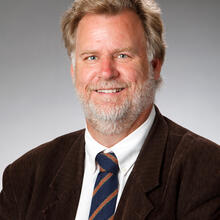Journey of Hope
A summer ago my family set off on a cross-country car trip from Minnesota to Vancouver, B.C., in part to pick up a wooden bench that my great-grandfather had made when my family immigrated to Canada. It was the first thing he built when he arrived. As an old man, he was too old to work in the fields, so he took care of his grandchildren as they played outside and he needed a bench to sit on.
About two hours into our journey, we realized that we had forgotten our passports. We had to turn around and drive back home, which added four hours to our long and looming drive time. It was an unforeseen glitch, and all journeys are full of them. But when there is a purpose to your journey, all the missteps are made worthwhile.
On the porch of my house an old bench sits now, almost 90 years old. It is not much of a bench in some ways. It is a simple bench, built without screws or nails. It is a connection to our family’s past, a journey of hope for our future. We drove a long way to bring it home.
According to the Gospel of Matthew, the Magi knew where they were travelling and they knew whom they had come to see, for they asked: “Where is the child who has been born king of the Jews? For we observed his star at its rising, and have come to pay him homage.” The late Raymond E. Brown, S.S., reminds us that beyond the historical realities of their journey are deeper spiritual realities that Matthew’s Gospel is driving at, connecting the natural revelation of the pagan world to the revelation of the Jewish Scripture and to the divine manifestation of Jesus himself.
But when we imagine the journey, coming from ancient Persia, Babylon or Arabia, we wonder, what had they experienced to arrive in Bethlehem? How long was a journey of hundreds of miles on camel, donkey or foot? Did they ever think to turn around and just go home? Matthew does not focus on their daunting journey, however, only on their arrival, because they had travelled to discover the source of salvation.
But when they arrived, they were lacking something, which is why they went to Herod. What they lacked was the special revelation given to the Jews, as embodied in Matthew’s citation, combined from Mi 5:1 and 2 Sm 5:2: “And you, Bethlehem, in the land of Judah, are by no means least among the rulers of Judah; for from you shall come a ruler who is to shepherd my people Israel.”
As for the Magi: “When they saw that the star had stopped, they were overwhelmed with joy. On entering the house, they saw the child with Mary his mother; and they knelt down and paid him homage. Then, opening their treasure chests, they offered him gifts of gold, frankincense, and myrrh.” On a journey of hope, the disappointments and struggles dissipate the moment you arrive at your destination.
They would return home warily because they had been “warned in a dream not to return to Herod,” but it is not wrong to suspect that they were transformed people when they arrived back home, for they brought home a new light. Compare this to Herod, who had access to the revelation of Scripture but whose only journey was one of despair. Jesus was a threat to Herod’s narrowly conceived power; the hope represented by Jesus was something to destroy, not celebrate.
Perhaps the Magi faced questions when they returned about why they travelled so far: Why go to see this child? Why follow that star? It was a journey of hope, not just for them, but for all of humanity. Father Brown went on to say of this journey, “In these Magi Matthew sees an anticipation of Jesus’ promise, ‘I tell you, many will come from east and west and will eat with Abraham and Isaac and Jacob in the kingdom of heaven’’’ (8:11). The Magi, ultimately, are a symbol of the journey we are all on, the true journey, which takes us not far from home, but back home to God. This God took on human form and came to us as an infant child to show us how to journey home.
This article also appeared in print, under the headline “Journey of Hope,” in the December 22-29, 2014, issue.







